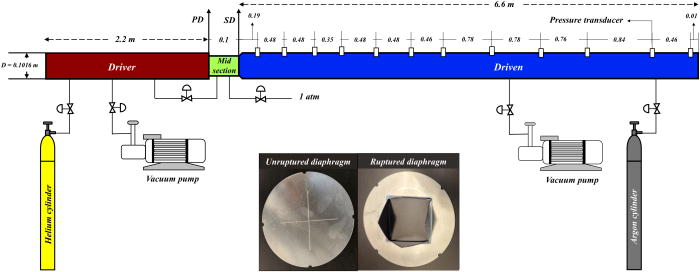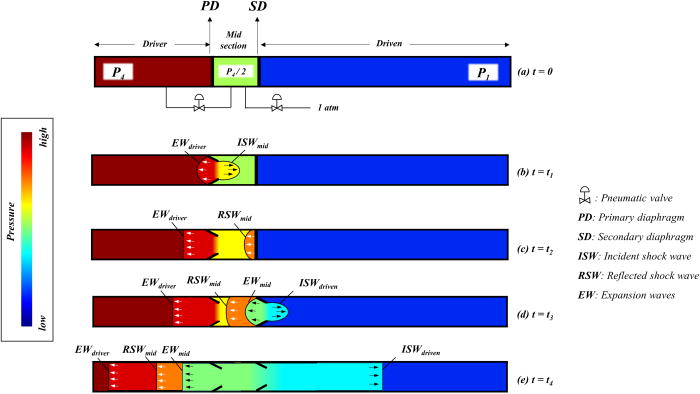

.png?sfvrsn=1b6bae1a_0) (FASTER)
(FASTER).png?sfvrsn=ac211bda_0)
The project addresses the challenges posed by shock wave control in double-diaphragm shock tubes. The findings help improve the design of shock tubes for better control over shock velocity, which is important for applications like chemical kinetics, material response studies, and high-speed gas dynamics.

Schematic of the KAUST's high-pressure shock tube facility along with the components required for its operation.
The images of an un-ruptured and ruptured diaphragm are also shown in the schematic.
Using high-pressure shock tube experiments, this research examines the influence of initial conditions, such as driver and mid-section pressures, on shock velocity profiles. Double-diaphragm configurations introduce complex wave interactions not seen in single-diaphragm setups, leading to acceleration and deceleration phases. The study focuses on understanding how these interactions impact shock wave propagation, which is crucial for precise control in combustion and materials science research.

A schematic of shock tube equipped with a double-diaphragm configuration and its operation.
Impacts: